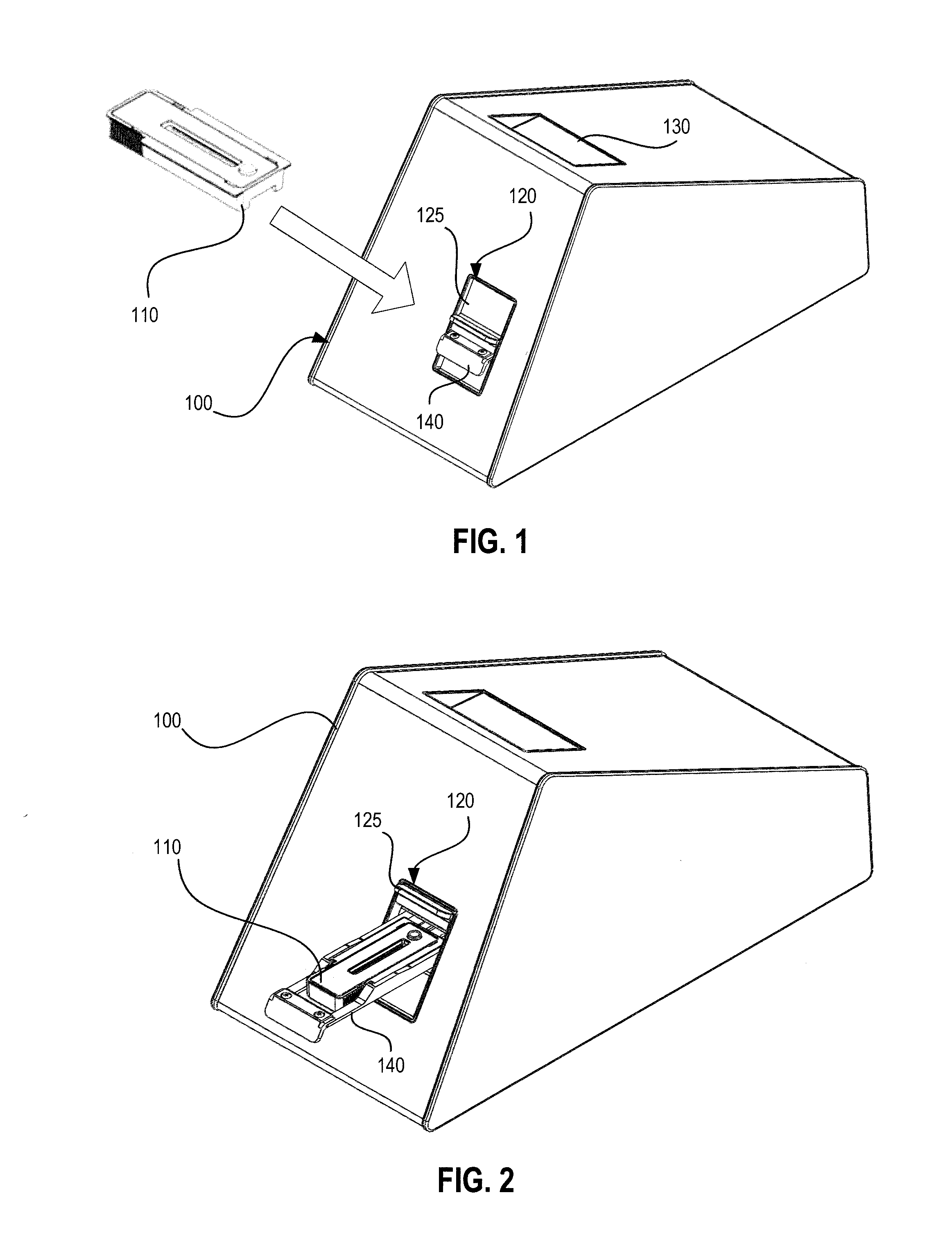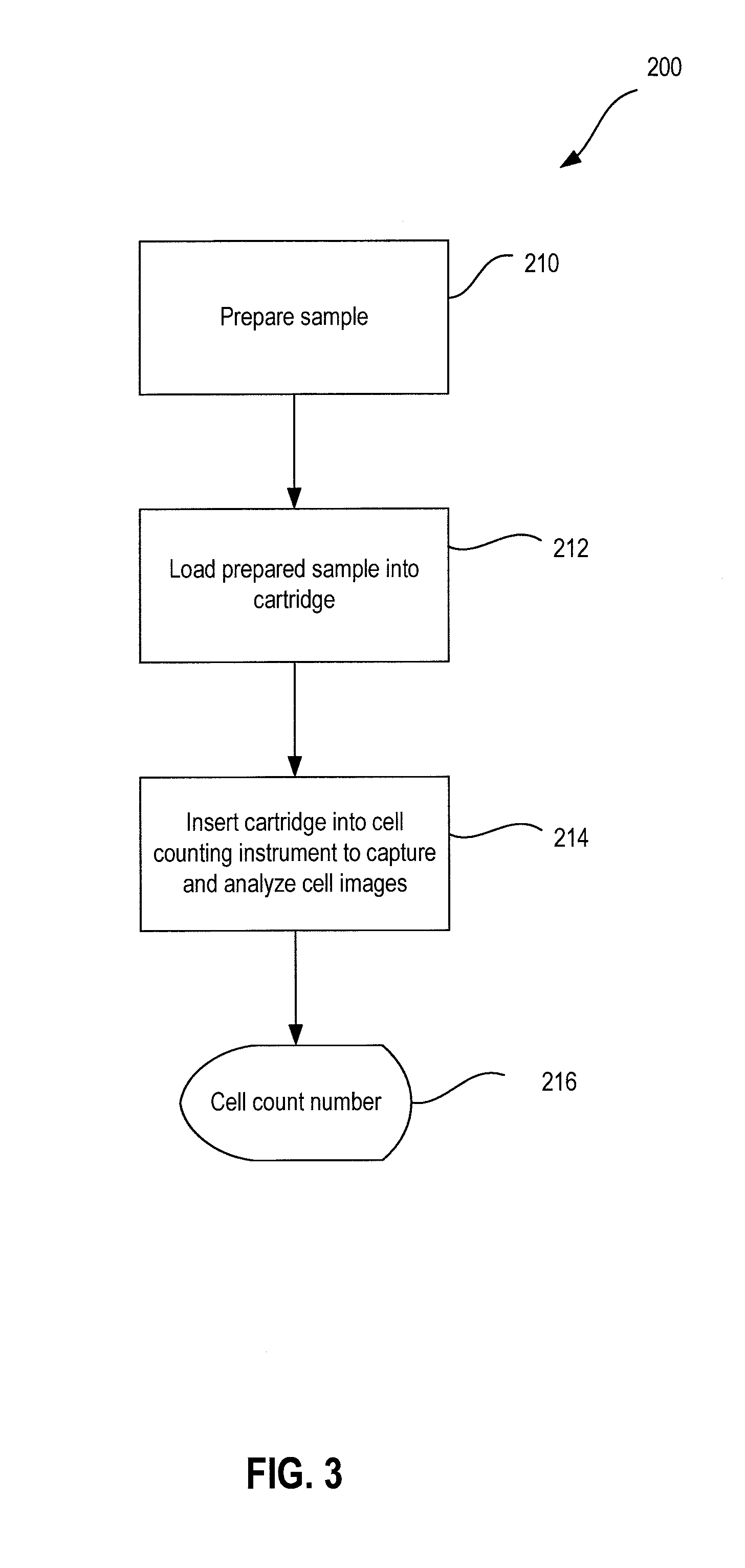System And Method For Cell Analysis
- Summary
- Abstract
- Description
- Claims
- Application Information
AI Technical Summary
Benefits of technology
Problems solved by technology
Method used
Image
Examples
example 1
CD4 T Helper Cell Count from 10 Microliters of Whole Blood Sample
[0135]Biological Reagents. For the purposes of this disclosure, commercially available and commonly used antibodies were used. However, it is to be recognized that other commercial or customized antibodies may also be used. It is also to be understood that for any given antibody, a single batch or a mixture of antibodies directed against the same antigen may be used. Such antibodies may be obtained from different sources but are all reactive against the same antigen.
[0136]Assay Reagents. Some of the assay reagents include bovine serum albumin (“BSA”, Sigma Life Science, St. Louis, Mo.), phosphate buffered saline (“PBS”, Fisher Scientific, Rockford, Ill.).
[0137]Blood Samples. Because one of the important uses of the instant system and method will be in point-of-care settings, it is important to evaluate the performance of the system on whole blood samples. Whole blood was sourced under an IRB-approved protocol from HIV-...
example 2
CD4 T Helper Cell Count from 10 Microliters of Whole Blood Sample Using a Combined Stain and Lysis Protocol
[0151]200 microliters of 10×RBC Lysis Buffer (Biolegend Catalogue #420301) were mixed with 1.8 ml deionized water to prepare 1× RBC Lysis Buffer. The 1×RBC Lysis Buffer was allowed to warm to room temperature. Cartridges were removed from packages and placed on a level surface. An antibody cocktail was prepared by mixing the following three antibodies: (a) Mouse anti-human CD4 Phycoerythrin, clone OKT4, (Biolegend Catalogue #317410); (b) Mouse anti-human CD4 Phycoerythrin, clone 13B8.2 (Coulter, Catalogue #IM0449U); and (c) Mouse anti-human CD14 AlexaFluor 647, clone HCD14 (Biolegend, Catalogue #32561). For example, the antibodies may be mixed by volume as 1 microliter of OKT4, 2 microliters of 13B8.2, and 1 microliter of HCD14; the exact mixture may be optimized according to assay performance. 4 microliters of the antibody cocktail were removed after vigorously mixing the cock...
example 3
Preparation and Use of Dried Reagents
[0156]For a point-of-care device, it would be desirable to offer kit components that do not require special controlled temperature storage. Dried kit reagent development is described briefly here. The most labile reagents in the presently described protocol may be the stain solutions, especially when stored at room temperature in facilities that may have inconsistent temperature control. Antibody stains in sample collection tubes have been successfully dried and assays with performance equal to direct addition of the liquid stains and flow cytometry measurements have been repeatedly demonstrated. Further, EDTA was incorporated into the dried antibody spot, resulting in direct anti-coagulant addition and staining of the 10 microliters blood sample. Experiments indicate high performance with only 5 to 10 minutes of incubation. These drying experiments have been based on selection of an appropriate sugar-based solution and overnight vacuum drying. H...
PUM
 Login to View More
Login to View More Abstract
Description
Claims
Application Information
 Login to View More
Login to View More - R&D
- Intellectual Property
- Life Sciences
- Materials
- Tech Scout
- Unparalleled Data Quality
- Higher Quality Content
- 60% Fewer Hallucinations
Browse by: Latest US Patents, China's latest patents, Technical Efficacy Thesaurus, Application Domain, Technology Topic, Popular Technical Reports.
© 2025 PatSnap. All rights reserved.Legal|Privacy policy|Modern Slavery Act Transparency Statement|Sitemap|About US| Contact US: help@patsnap.com



